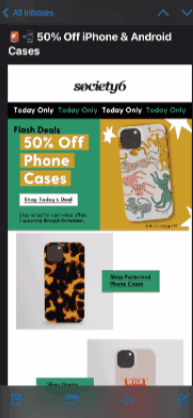Getting Your Customers Back: 10 Examples of Effective Re-Engagement Emails

By imscottcohen@gmail.com (Scott Cohen)
I’ve been breathing life into email campaigns since 2007 when the iPhone was the newest thing on the block. Even though the learning resources for email marketers have evolved since then, I still have countless re-engagement email examples in my inbox which don’t prompt me to, well, re-engage.
While getting ignored by your subscribers is bad enough, if too many subscribers do the same, you may end up damaging your sender reputation, which may encourage email service providers to treat your messages as spam.
Since you obviously don’t want that, I’ll explain everything you need to know about email re-engagement and how you can get your lovely subscribers back — with some added spice from experts as well.
Table of Contents
- What are Re-Engagement Emails?
- Common Types of Re-Engagement Emails
- Real-Life Examples of Re-Engagement Emails
Like a meetup with an old friend, a re-engagement email is often about remembering the good memories you shared — rather than asking for favors (or asking customers to purchase your products).
In my experience, a well-done re-engagement email conveys “we miss you” instead of “we miss your money” to regain a customer who may have forgotten about your brand.
Importance of Re-Engagement Emails
While re-engagement emails offer several advantages to email marketers, I typically rely on them for the following use cases.
- Attract inactive customers. An email subject line like “You’ve Got Mail!” may have given internet users goosebumps 20 years ago, but this isn’t the case now. With about 360 billion emails sent and received daily around the globe, it’s easy for customers to miss your marketing emails. So, I recommend giving your subscribers a gentle nudge to re-engage them.
- Generate missed revenue. Unlike 25% of new customers who abandon a purchase because they don’t trust a website with their financial details, your existing customers already trust you. This makes them a reliable source of revenue.
- Improve email sender reputation. While sending emails to all your leads sounds good on paper, it’s a sure way to get exiled into the spam dungeon. According to Validity, 15% of emails never reach the inbox. By sending re-engagement emails, you can decide the fate of inactive subscribers and protect your email sender reputation.
Pro tip: Use re-engagement emails to see where you’re lacking in your regular marketing emails — sort of like A/B testing. This way, you can refine your strategies and improve subscriber engagement.
If a re-engagement email helps you connect with your disengaged audience segment, it might help you get a better open rate from the active audience base as well.
Lina Lugova, chief marketing officer at Epom, emphasizes adding the missing value: “The reason why you have to send a re-engagement email is that your previous activity didn’t bring enough value, so you should do it now.”
Common Types of Re-Engagement Emails
The appropriate re-engagement …read more
Source:: HubSpot Blog










